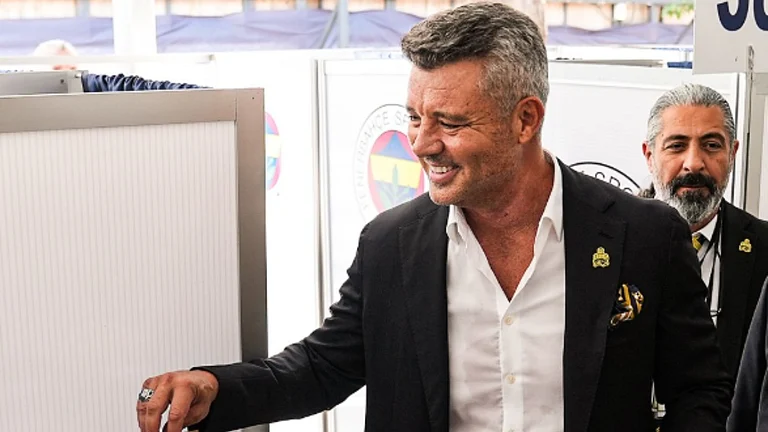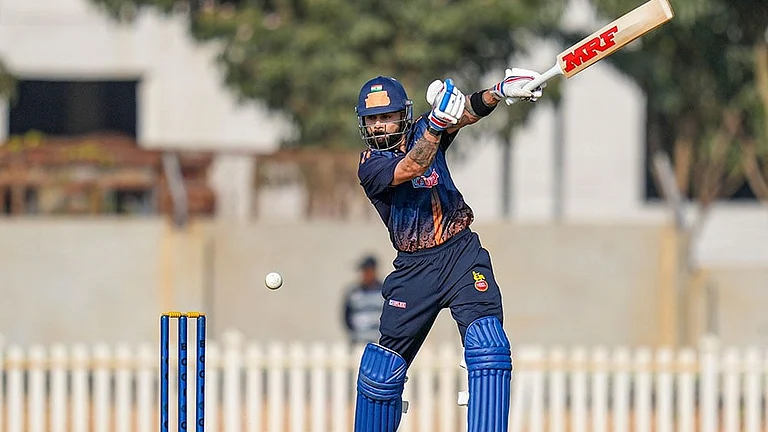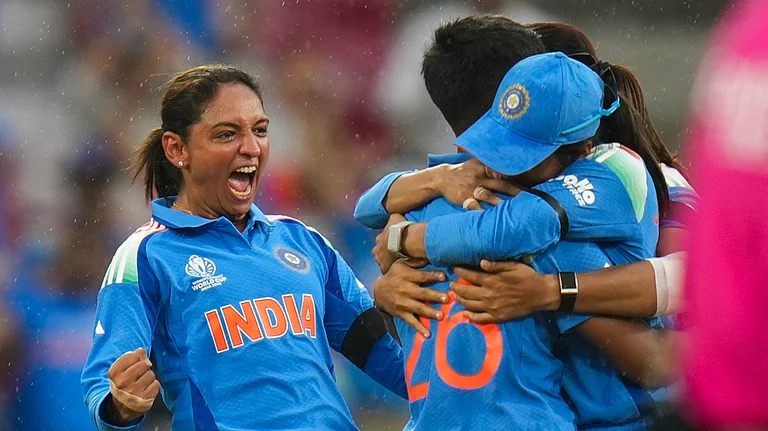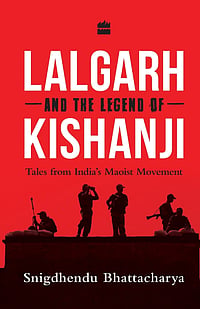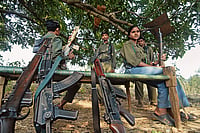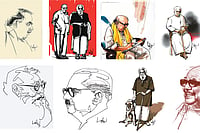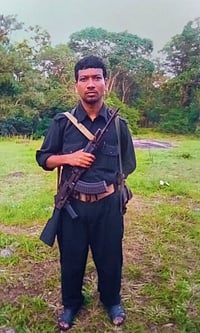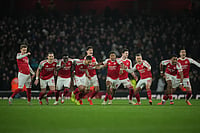Chief minister Mamata Banerjee lashed out at the BJP on June 14 for trying to divide Bengal and vowed to protect the geographical integrity of the state at any cost. In a state that has witnessed bifurcations twice—in 1905 (revoked later) and 1947—with catastrophic consequences, the charge of attempting to engineer a third bifurcation can become a weapon with which she can, possibly, destroy the BJP in West Bengal.
Her angry reactions came following news reports that two BJP Lok Sabha MPs from north Bengal have demanded separation of north Bengal to make it a separate state or a Union territory. The demand was raised during a meeting at Alipurduar MP John Barla’s home on June 13. Jalpaiguri MP Jayanta Roy, who was present at the meeting, reportedly backed Barla.
The issue is all the more sensitive because north Bengal has already witnessed three separate statehood movements, all of them with some violent phases, for the proposed states of the Darjeeling-centric Gorkhaland and the Cooch Behar-centric Kamtapur and Greater Cooch Behar. The BJP had an alliance with leaders of factions of all these movements.
“What does making it a Union territory mean? Keeping it under surveillance like Kashmir? Gagging? Suspension of rights? Whose interests are they serving by trying to splinter Bengal? They are shameless despite such a blow (electoral),” an angry Banerjee said. BJP’s state unit president Dilip Ghosh tweeted that dividing Bengal was not on the party’s agenda and that the TMC was spreading lies using “agencies and the media”.
But Barla repeated his demands twice, this time publicly, once during an interview to Nepali-language media in north Bengal on June 17 and later while answering newspersons at a party event on June 19. Barla argued that apart from decades of neglect, resulting in underdevelopment, north Bengal was turning into a hub of terrorists, was overcrowded with Bangladeshi infiltrators and heading towards a Kashmir-like situation.
As the issue started snowballing, on June 20, which the BJP celebrates as Paschimbanga Dibas to commemorate the day in 1947 when the Bengal assembly decided to bifurcate the state, Dilip Ghosh said that the party stood for one West Bengal and that Barla’s comments reflected his personal opinion. “I understand Barla’s pains. North Bengal has truly suffered from negligence and so has the southwestern region that I represent. But the BJP does not have any statehood demand on its agenda and the state president has made the party’s official stand clear,” said Suvendu Adhikari, the leader of the opposition. But a day after, another BJP MLA from north Bengal, Anandamay Barman of Matigara-Naxalbari, publicly supported Barla’s demands saying that the MP spoke the people’s mind.
The charges of negligence or deprivation is not entirely baseless. A Bengal Chamber of Commerce report on north Bengal, published in 2016, said, “Districts under North Bengal are characterised by lower literacy levels compared to the rest of Bengal. But Darjeeling district records a comparatively high literacy rate. In addition to low levels of literacy there is also marked gender disparity.”
It said the educational composition of workers in North Bengal districts revealed availability of a bulk of unskilled and illiterate workers in comparison to the state as a whole. “The relative proportion of educated (matriculate and above) people in the districts of north Bengal (excluding Darjeeling) is far below the state average… As per the income estimates available, the per capita income in all the districts of north Bengal is far below the state average,” the report states.

Literacy rate is particularly low, sex ratio alarmingly skewed and population growth rate high in Malda and Uttar Dinajpur—district sharing a common border with Bangladesh. Malda became a Muslim-majority district in 2001 and Uttar Dinajpur in 2011. According to the 2011 census, the population growth rate in Uttar Dinajpur was 22.9 per cent, sex ratio 936, and literary rate 60.13 per cent. In Malda, the population growth rate stood at 21.5 per cent, sex ratio at 939 and literary rate at 67.71 per cent. The state average for population growth was 13.84 per cent, sex ratio 950 and literary rate 76.26 per cent.
It is because of the relative backwardness of three particular regions in the state—north Bengal, southwestern Bengal called Poschimanchal and the Sunderbans—there are three separate departments headed by cabinet ministers. However, ever since coming to power in the state in 2011, chief minister Mamata Banerjee has repeatedly prioritised the development of north Bengal. She pays frequent visits and has announced a range of schemes for the local people, apart from building a secretariat in Siliguri named Uttarkanya. “There is no denying that north Bengal has seen visible improvements, especially in connectivity and the tourism sector, during her rule,” says Nirmal Lama, owner of a homestay in Kalimpong district.
Despite these, the TMC, which has historically had a weak organisational strength in north Bengal, quickly lost grounds to the BJP in the region since the 2018 panchayat elections. The Rashtriya Swayamsevak Sangh (RSS), which has a separate state unit for north Bengal, recorded a phenomenal growth in parts of the region.
The recent emergence of the statehood demand did not come from nowhere. Soon after the results of the assembly elections were announced on May 2, a campaign started on Facebook demanding a separate state of north Bengal and the campaigners were mostly supporters of the BJP, as their social media profiles revealed. The BJP had fared better in north Bengal compared to the rest of the state in the assembly election. This social media campaign immediately drew a backlash, with people against partition targeting the statehood campaigners by branding them as “frustrated BJP supporters” who wanted to divide Bengal as they failed to win the state.
A Facebook page named Uttarbanga Banchito (deprived) that has campaigned for the issue since May 2019 mostly highlighted the fact that north Bengal has remained a neglected region. As of today, it has 73,300 members. The TMC’s Cooch Behar district unit president Partha Pratim Roy recently alleged that people associated with the banned Kamtapur Liberation Organisation (KLO) was behind running this page.
Besides, a Facebook group named Uttarbanga Alada Rajyo (north Bengal separate state) was created on May 3, a day after election results were out. The group’s name changed to Banchito Uttarbanga (deprived north Bengal) on May 10. One of the two ‘admins’ of the group is Pritam Singha, a BJP campaigner. Another public group, named Uttarbanga Rajyo Chai (we demand separate state for north Bengal) was created the same day. The next day, as many as four Facebook pages were created, all having the same name Uttarbanga Rajyo Chai. Most of the people active on these pages appear to be BJP supporters. One had as its ‘profile picture’ a bifurcated map of Bengal showing saffron north and green south. The other had Jai Shree Ram as the ‘profile picture’.
So, is it really much ado about nothing, as the BJP’s state unit president claimed on June 15? We may have to wait to see that but there was one thing to which all political observers agreed—publicly supporting separation of north Bengal could be politically damaging in the rest of the state, especially given the fact that geographically, demographically and electoral constituency-wise, north Bengal makes only one-fifth of the state.
By Snigdhendu Bhattacharya in Calcutta







